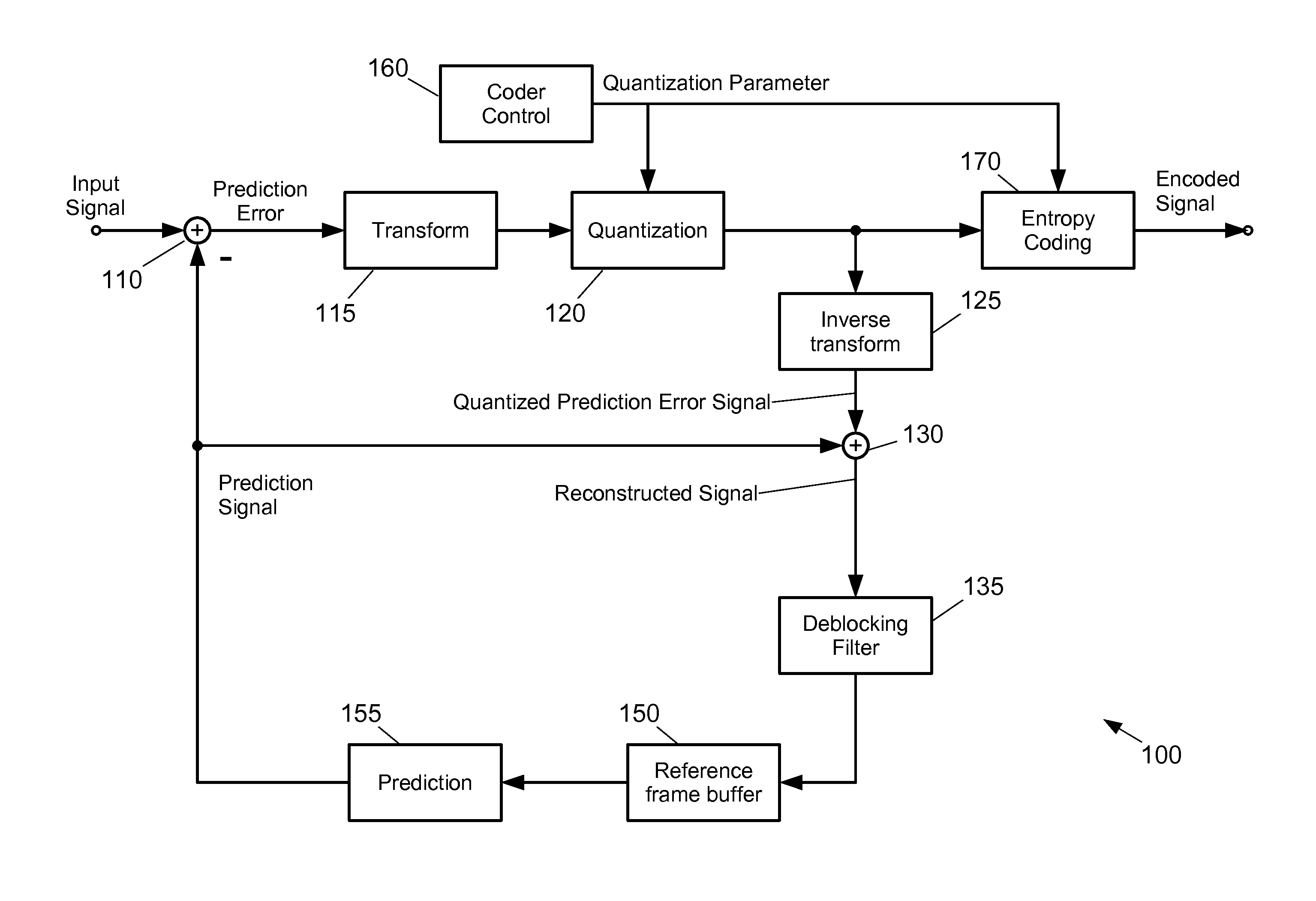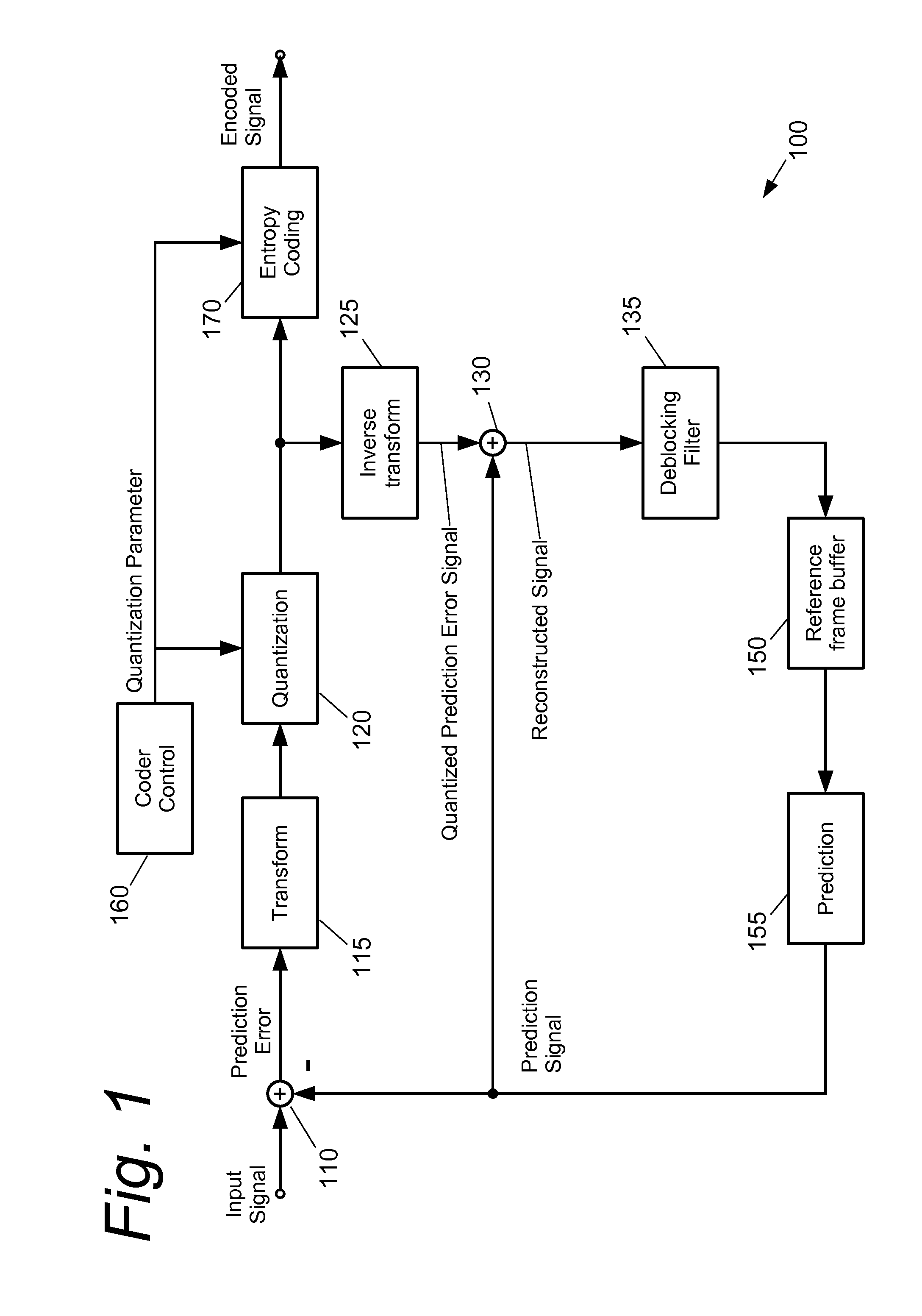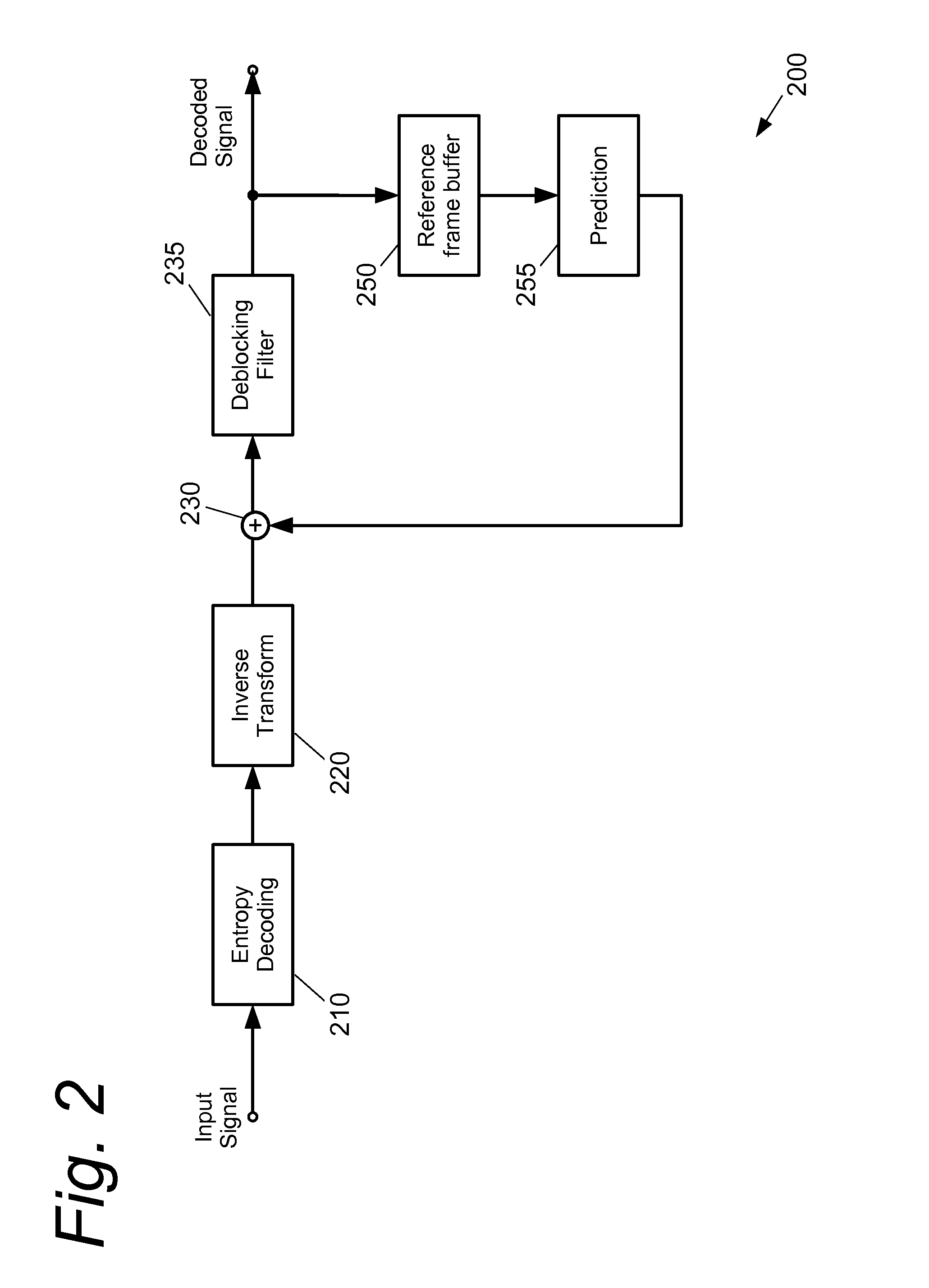Order of deblocking
a video coding and order technology, applied in the field of block-based video coding, can solve the problems of subjective annoying, disturbing blocking artifacts at the edges of the cus, affecting the efficiency of hardware and software implementation, etc., and achieve the effect of efficient hardware and software implementation
- Summary
- Abstract
- Description
- Claims
- Application Information
AI Technical Summary
Benefits of technology
Problems solved by technology
Method used
Image
Examples
Embodiment Construction
[0057]According to the present invention, deblocking is no longer performed on a block-by-block basis but in batch mode for an entire frame. Moreover, the processes of decoding, horizontal deblocking, and vertical deblocking are disentangled in the sense that, in a first step, a plurality of blocks is decoded, which are then simultaneously subjected to horizontal deblocking in a second step. After horizontal deblocking is completed, all blocks are subjected to vertical deblocking in a third step. Obviously, the sequence of the horizontal deblocking and the vertical deblocking may be exchanged.
[0058]In this manner, the dependencies between the individual steps are substantially reduced, allowing for highly efficient implementation on concurrent computing systems.
[0059]FIG. 7A schematically illustrates a frame 700 of video data, consisting of a plurality of coding units 710 with 8×8 pixels each. In a first step, pixel data has been decoded for each of said coding units (open circles)....
PUM
 Login to View More
Login to View More Abstract
Description
Claims
Application Information
 Login to View More
Login to View More - R&D
- Intellectual Property
- Life Sciences
- Materials
- Tech Scout
- Unparalleled Data Quality
- Higher Quality Content
- 60% Fewer Hallucinations
Browse by: Latest US Patents, China's latest patents, Technical Efficacy Thesaurus, Application Domain, Technology Topic, Popular Technical Reports.
© 2025 PatSnap. All rights reserved.Legal|Privacy policy|Modern Slavery Act Transparency Statement|Sitemap|About US| Contact US: help@patsnap.com



